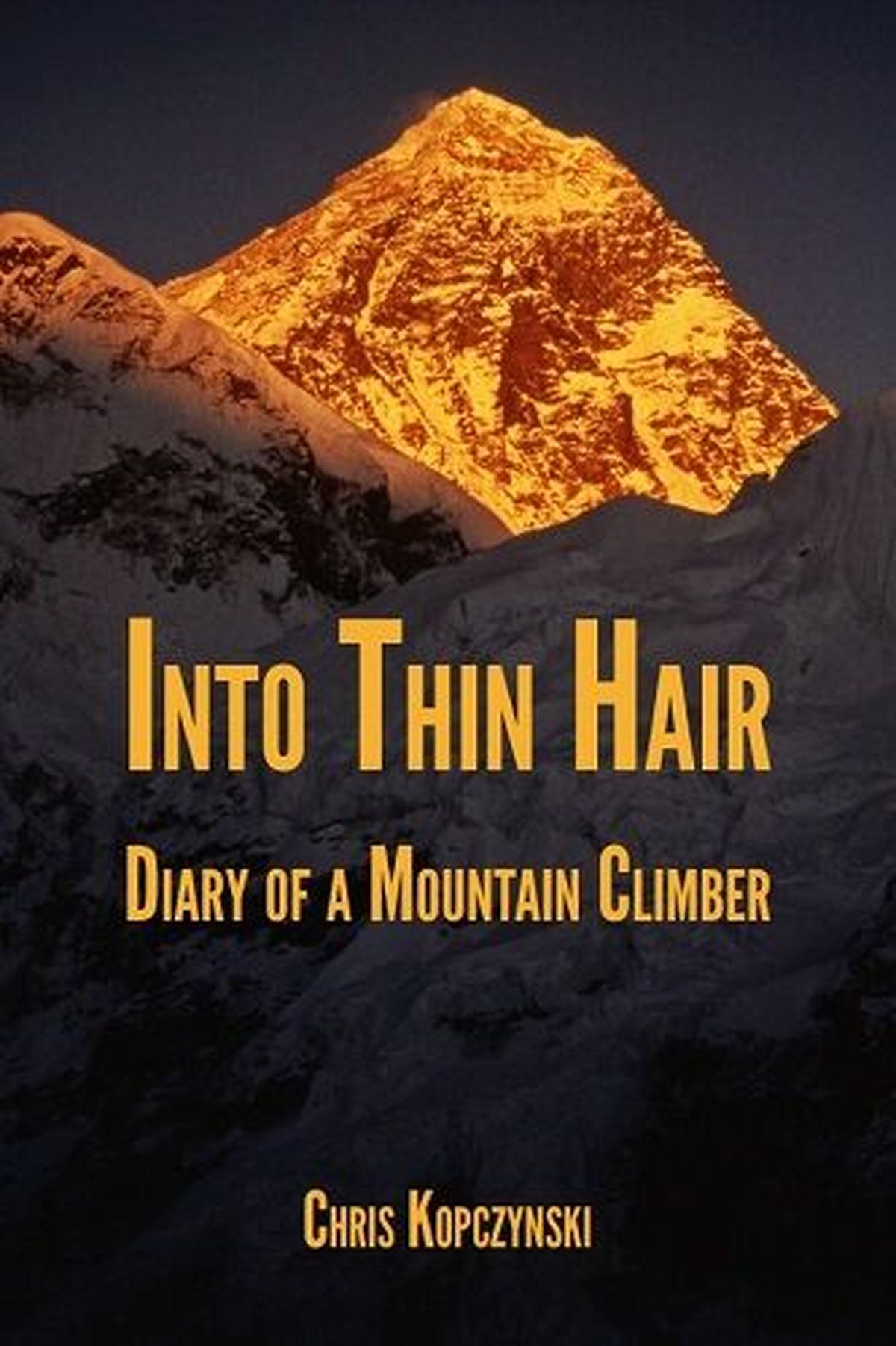Chris Kopczynski’s ‘Into Thin Hair’ is a celebration of survival

Chris Kopczynski wanted to be an astronaut but decided to keep his feet firmly beneath him.
Instead, he reached as high as he could for the stars, his head above the clouds, without ever leaving the earth. As a child, he climbed higher than any adult would deem safe on the bridges around Spokane.
He kept going up, through the mountains of the Pacific Northwest and Canada and eventually scaling the highest peaks on all seven continents – and an eighth peak for good measure.
“Kop,” as everyone brave enough to follow or go with him up a mountain, would know him, chronicles his life-threatening tests of strength in his self-published book “Into Thin Hair.” Kopczynski’s title is a wry nod to Jon Krakauer mountain-climbing classic “Into Thin Air,” which was a personal tale of a 1996 disaster on Mount Everest that left five people dead.
Kopczynski’s book, while telling harrowing stories of life-and-death struggles of strength and stamina in conquering nature’s most challenging summits, is a celebration of survival. It’s less about braving the elements and more about overcoming fear of the unknown.
He writes in detail of each gasp for breath above 20,000 feet and the pains the human body endures while struggling to adapt to altitudes it’s not meant to weather. Kopczynski allows readers to experience with him each guarded and slippery step over frozen glaciers and through hellish storms over chasmic cliffs.
You don’t have to read very far into the book to realize when Kopczynski talks about “adventure,” it’s a code word meaning that next time he could have died.
The book, recently picked up for hardcover international distribution, is a series of thrill rides as high as anyone has ever gone without a rocket. But Kopczynski also goes beyond the adrenaline rush to bring an honesty to his writing tha t transcends the rocky summits.
It’s a story about trust.
“When I removed the last piton before the overhang, I put all my faith in my partner, clasping both hands on my lifeline, which may or may not have been manufactured under the watch of a disgruntled laborer, I closed my eyes and swung into space, spinning slowly in circles,” Kopczynski writes about climbing Mount Chempren in the Canadian Rockies.
“The rope held, answering my initial doubt. Now, with all my strength focused on my aching arms, the next 30 feet to get over the overhang, was pure adrenaline with 3,000 feet of nothing between me and the rocks below.”
It’s a story about death.
As Kopczynski constantly reminds us, 90% of mountaineering deaths occur coming back down after reaching the top. The tallest mountains of the world stand littered with the frozen and mummified remains of those who didn’t make it back to base camp because recovering bodies would be just as deadly.
Kopczynski lends a dignity to friends whom he’s lost and fellow climbers who earned his respect by giving their last measures of devotion. In this aspect, the book is less a memoir and more a memorial to those who aren’t here to tell their stories.
Kopczynski was part of a 1974 international expedition in the Pamir Mountains of the then Soviet Union that became one of the worst mountaineering tragedies in history. It would end in the deaths of 15 climbers, including the entire Soviet women’s climbing team.
“Death is something my mind has had to deal with,” Kopczynski writes. “It’s not a mystery I think about, nor pray about, as I believe I have but one life and my heaven is right here on Earth.
“I believe my children carry my spirit, and hopefully, they inherit some of my love of life … What I heard and witnessed in the Pamirs that summer stirs my innermost feelings of sadness and decades later my emotions override my heart with grief.”
It’s a story about questioning one’s own values.
Kopczynski doesn’t overly romanticize his climbing. He describes passion becoming obsession that pushed his Spokane construction business to the brink of bankruptcy and dissolved a marriage. Clinging to the side of a mountain or standing on the summit brought waves of self-loathing and self-doubt, as it did during one exhausting and failed assent in South America.
“Trying to explain my passion for mountaineering to nonclimbers had always been difficult,” he writes, “but now I found myself struggling to explain the foolishness to myself.”
The hardback version next year will get a new title: “Highest and Hardest: A Mountain Climber’s Lifetime Odyssey to the Top of the World.” The new version may also lend an opportunity to put more polish to push an already well-written book to the heights it merits. Cliches mar the writing, and technical jargon of mountain climbing weigh down the lay reader.
This book deserves a literary treatment, however, as Kopczynski takes readers on a riveting journey to the highest places one can soar with their feet still on the ground.
Ron Sylvester has been a journalist for more than 40 years with publications including the Orange County Register, Las Vegas Sun, Wichita Eagle and USA Today. He currently lives in rural Kansas.